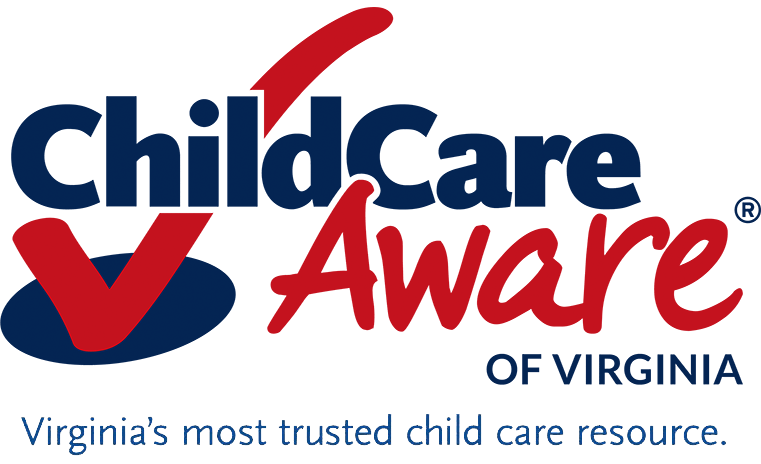Finding the right child care provider is a crucial decision for your family. After receiving your referral list, dive deeper to learn more about the ones that might interest you. View their profiles on our self-search database, view their inspection records, visit their websites, and call to schedule a tour to see their background and qualifications first hand.
Here are some key factors to consider:
Licensing and Inspections
Check the Department of Social Services website to see the results of a provider’s most recent health and safety inspections. Look for any violations and the plan of correction to understand how the provider responds to violations. Keep in mind that unlicensed providers, such as Religiously Exempt Child Day Centers and Voluntarily Registered Family Day Homes are not inspected as often as licensed providers, so they may have fewer records for you to review.
VQB5 – Unified Virginia Quality Birth to Five System
This system measures and improves the quality of early childhood education programs. It focuses on two aspects of quality: teacher-child interactions (assessed using the Classroom Assessment Scoring System) and the implementation of an approved curriculum. VQB5 ratings will be available to the public starting in Fall 2024.
National and State Accreditation
Accreditation is voluntary but indicates a provider’s commitment to meeting national safety standards in addition to state licensing requirements.
- American Camp Association (ACA)
- Association of Christian Schools International (ACSI)
- American Montessori Society (AMS)
- Council on Accreditation (COA)
- Cognia (formerly AdvancED)
- National Accreditation Commission for Early Care and Education Programs (NAC)
- National Association for the Education of Young Children (NAEYC)
- National Association for Family Child Care (NAFCC)
- National Council for Private School Accreditation (NCPSA)
- National Early Childhood Program Accreditation (NECPA)
- Virginia Association of Independent Schools (VAIS)
Standards and Curriculum
High-quality programs align their practices with VDOE’s early learning and development standards. These standards cover important areas like approaches to play and learning, social and emotional development, communication, health and physical development, and cognitive development.
- Abeka — A biblically based curriculum for grades pre-k through grade 12. Utilizes a Spiral Learning approach the begins with the basics and progresses to deeper understanding at age-appropriate times. Offers curriculum for homeschool, Christian schools, and preschools.
- The Creative Curriculum — An differentiated approach in which children learn through creative and active teaching strategies. Curriculum is divided by age — Infant, Toddlers & Twos, Preschool, Kindergarten, and Family Child Care.
- High Scope — A play-based, child-centered curriculum featuring active learning, positive adult-child interactions, a child friendly learning environment, a consistent daily routine, and team-based assessment. Offers curriculum for Infant-Toddler and preschool.
- Montessori — The Montessori method is an approach to classroom learning that emphasizes independence and choice. Montessori education programs are characterized by Montessori trained teachers, multi-age classrooms, specially designed Montessori materials, child-directed work, and extended periods of free choice.
- Reggio Emilia Approach — The Reggio Emilia approach is an inclusive, village-style approach that engages children, parents, and the community as all being essential components to the learning process. Children have control over their learning and teachers collaborate with students, rather than just instructing them. There is no set curriculum or testing program, but teachers will often base lesson plans on each child’s interests.
- RIE (Resources for Infant Educators) Approach — The RIE, or “Educaring” approach believes parents and caretakers must have respect for infants and trust that they are natural inventors, explorers, and self-learners. This approach encourages freedom to explore and interact with other infants, time for uninterrupted play, and environment that is safe, cognitively challenging, and emotionally nurturing, and the involvement of the child in all care activities.
- Waldorf Approach — The curriculum at a Waldorf preschool is focused on creative learning over academics, developing a love of learning, and encouraging a child’s natural curiosity for the world around them. Waldorf schools do not use any computers or digital technology in the early grades curriculum, although mechanical technology and the practical arts are incorporated at all levels.
Providers can also create their own curriculum. Frequently, these self-designed curriculum are:
- Play based — A play-based curriculum allows children to learn the skills they need in a structured environment with the help and supervision of a teacher through social play, individual play, and group play.
- Cooperative Approach — An instructional strategy in which small groups of students work together on a common task.
Resources to Guide Your Search
